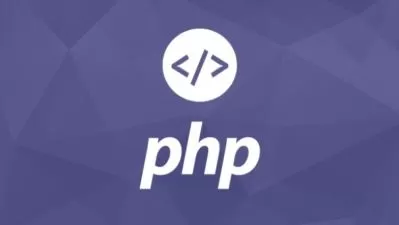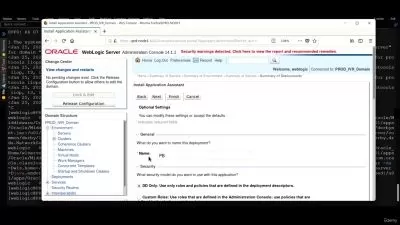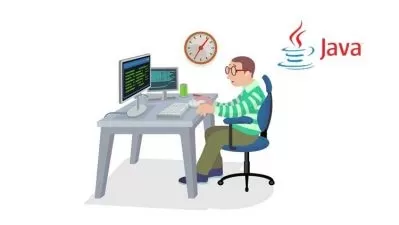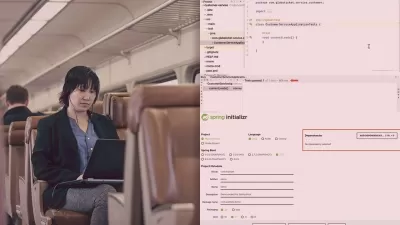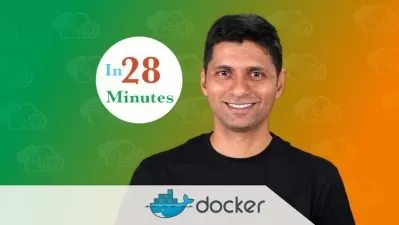Starting with Hilla (from Vaadin)
David Marko
2:15:49
Description
Learn using Hilla web framework for building a full-stack web applications
What You'll Learn?
- Create a new Hilla application from scratch
- Understand how Hilla frontend and backend are connected together
- Working with Hilla backend endpoints
- Create simple but complete application in Hilla
- Implement a simple @Push technology support in real application
- Create MS Excel file from dynamic data and serve it from Hilla app
- How to add MongoDB as Hilla backend data store
Who is this for?
What You Need to Know?
More details
DescriptionHello,
welcome to the ‘Starting with Hilla from Vaadin’ course. With this course you are going to add a value to your existing JAVA and and SpringBoot knowledge by getting familiar with Hilla web framework. Adopting Hilla will help you create a fullstack (frontend/backend) applications in one project structure using a well know technologies like a Java, Typescript, SpringBoot, Node.js .
The course covers several topics often useful in corporate JAVA development but not exclusively. SpringBoot is being used here as an underlying framework used by Hilla web framework by default. Hilla integrates a Spring Boot Java back end with a reactive TypeScript front end. It helps you build apps faster with type-safe server communication, included UI components, and integrated tooling.
Primary idea of this course is to help existing SpringBoot/Java developers to adopt Hilla web framework and move from common backend development to frontend also. Hilla makes this connection much more feasible and you hopefully get taste of this in our course. Are you working with Angular or React with SpringBoot backend? This course can help you to get taste of more tight integration Hilla makes to SpringBoot backend and reuse your existing SpringBoot skills in a full scale.
Topics covered by this course:
During a course we create basic Hilla single page application and each lecture will add a new enhancement to it. Eventually we create single application with many different features.
understanding Hilla project structure
creating single page Hilla application step-by-step
using MongoDB as persistent data storage
collaboration using server @Push technology
export application data in MS Excel format
Important part of this course is to realize 'what we don't need to do' when using Hilla. Simplification can be huge and old saying that 'the best code is the code you don't have to write' proves here.
Project source code:
The project source code is linked to a last lecture in this course in resource section. You are welcome to clone the project.
Who is this course for:
‘Starting with Hilla’ course is targeted for individuals or small/medium teams of professional Java developers that want to be productive and competitive in this large market. You will see how Hilla and Vaadin take away the unnatural "need" to split teams into Frontend and Backend developers, with all communication hassles that come with that all the time.
Who this course is for:
- ‘Starting with Hilla’ course is targeted for individuals or small/medium teams of professional Java developers that want to be productive and competitive in this large market. You will see how Hilla and Vaadin take away the unnatural "need" to split teams into Frontend and Backend developers, with all communication hassles that come with that all the time.
Hello,
welcome to the ‘Starting with Hilla from Vaadin’ course. With this course you are going to add a value to your existing JAVA and and SpringBoot knowledge by getting familiar with Hilla web framework. Adopting Hilla will help you create a fullstack (frontend/backend) applications in one project structure using a well know technologies like a Java, Typescript, SpringBoot, Node.js .
The course covers several topics often useful in corporate JAVA development but not exclusively. SpringBoot is being used here as an underlying framework used by Hilla web framework by default. Hilla integrates a Spring Boot Java back end with a reactive TypeScript front end. It helps you build apps faster with type-safe server communication, included UI components, and integrated tooling.
Primary idea of this course is to help existing SpringBoot/Java developers to adopt Hilla web framework and move from common backend development to frontend also. Hilla makes this connection much more feasible and you hopefully get taste of this in our course. Are you working with Angular or React with SpringBoot backend? This course can help you to get taste of more tight integration Hilla makes to SpringBoot backend and reuse your existing SpringBoot skills in a full scale.
Topics covered by this course:
During a course we create basic Hilla single page application and each lecture will add a new enhancement to it. Eventually we create single application with many different features.
understanding Hilla project structure
creating single page Hilla application step-by-step
using MongoDB as persistent data storage
collaboration using server @Push technology
export application data in MS Excel format
Important part of this course is to realize 'what we don't need to do' when using Hilla. Simplification can be huge and old saying that 'the best code is the code you don't have to write' proves here.
Project source code:
The project source code is linked to a last lecture in this course in resource section. You are welcome to clone the project.
Who is this course for:
‘Starting with Hilla’ course is targeted for individuals or small/medium teams of professional Java developers that want to be productive and competitive in this large market. You will see how Hilla and Vaadin take away the unnatural "need" to split teams into Frontend and Backend developers, with all communication hassles that come with that all the time.
Who this course is for:
- ‘Starting with Hilla’ course is targeted for individuals or small/medium teams of professional Java developers that want to be productive and competitive in this large market. You will see how Hilla and Vaadin take away the unnatural "need" to split teams into Frontend and Backend developers, with all communication hassles that come with that all the time.
User Reviews
Rating
David Marko
Instructor's Courses
Udemy
View courses Udemy- language english
- Training sessions 23
- duration 2:15:49
- English subtitles has
- Release Date 2022/11/22






